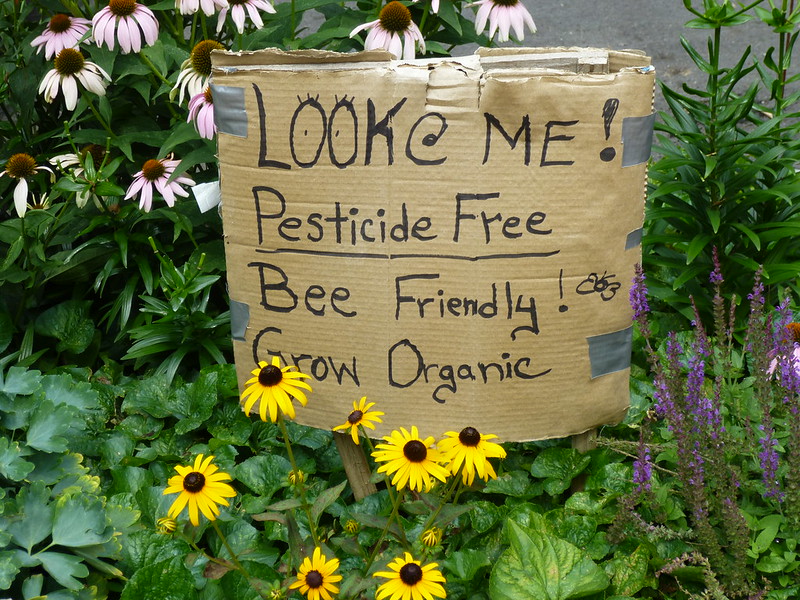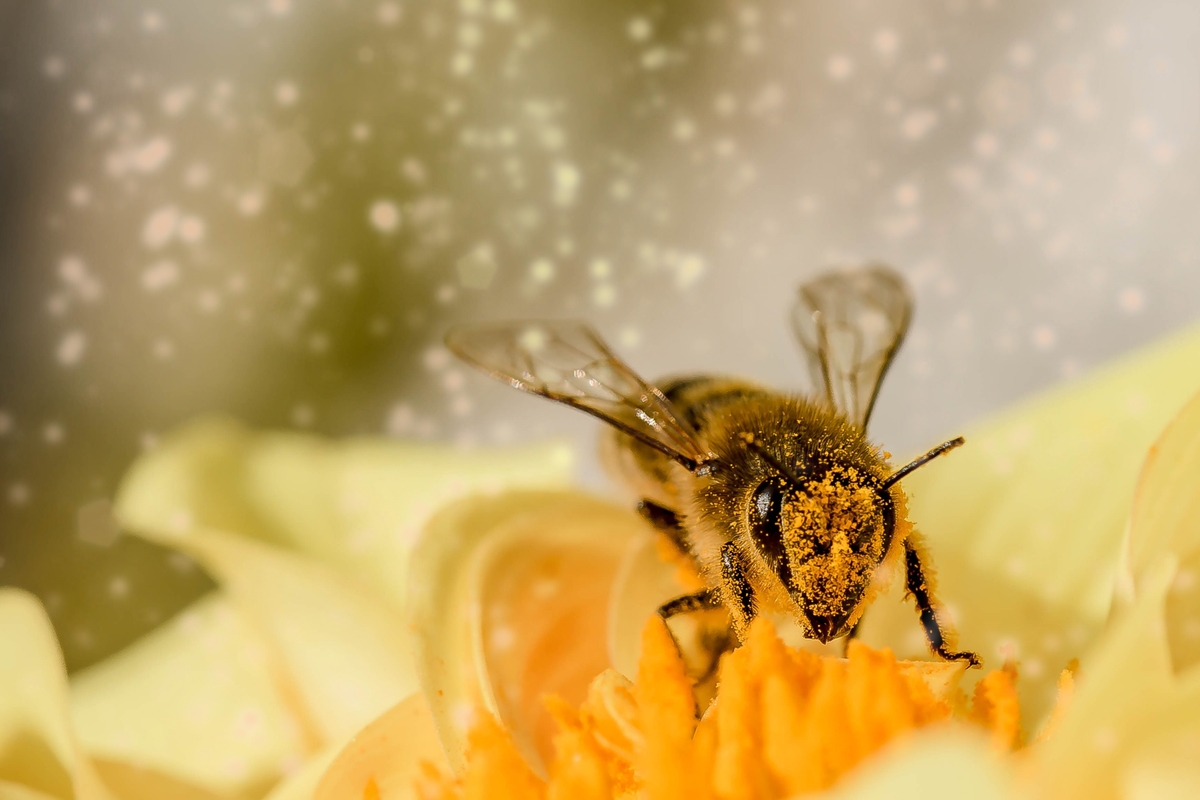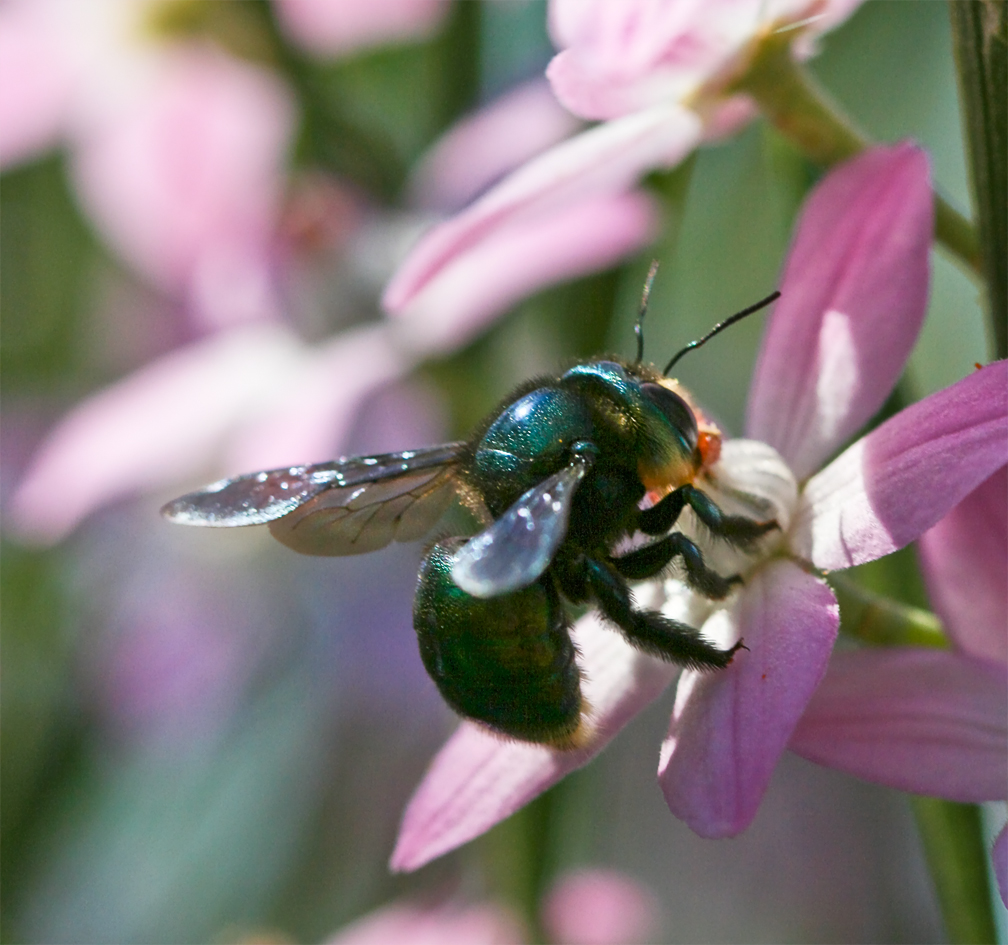I enjoy tending to my garden and witnessing tender shoots emerge. In early spring, my husband and I built raised garden beds out of pallets, filled them with soil and planted our first seedlings. Excitedly, I anticipated their growth. However, my excitement gradually turned into disappointment as vibrant flowers thrived, yet no cucumbers or pumpkins appeared for harvest.
Seeking answers, I delved into digital exploration, discovering bees’ vital role in nature’s pollination dance. Despite my efforts to attract pollinators by planting additional bee-friendly plants, the gentle hum of bees remained absent.
The mystery deepened, prompting a profound investigation. I uncovered a disconcerting truth—extreme weather events, exacerbated by climate change, posed formidable challenges to our primary pollinators – the bees – worldwide.
Climate change takes centre stage, casting uncertainty over our planet’s future. Particularly alarming is the increasing frequency of wildfires, threatening once-thriving bee habitats. The delicate balance sustaining diverse flora and fauna unravels, with potential cascading effects on ecosystems.
This blog post discusses the profound impact of wildfires on bee populations and their extensive implications for humanity. We’ll also uncover potential ramifications for our food systems and the livelihoods of beekeepers. This examination underscores the urgent call for comprehensive solutions to shield our indispensable pollinators and fortify the delicate balance of our shared environment.
Lastly, we will introduce exci’s cutting-edge AI-powered early wildfire detection technology. With its ability to identify and alert authorities to fire outbreaks within minutes of ignition, exci is a potent defence against wildfire threats to bee populations and their habitats.
 Image source: https://www.tandfonline.com/doi/epdf/10.1080/00218839.2023.2247115?needAccess=true
Image source: https://www.tandfonline.com/doi/epdf/10.1080/00218839.2023.2247115?needAccess=true
Buzzing Silence: The Global Impact
While honey bees are adaptable, evidence suggests that extreme weather events, from unprecedented European wildfires to Australia’s Black Summer bushfires, leave an indelible mark on the global landscape.
Globally, beekeepers, from Greece to California, face unprecedented threats from wildfires. Bee hives succumb to infernos, leaving once-buzzing ecosystems eerily silent, and the loss of honey harvests puts beekeepers in dire straits, impacting their livelihoods significantly. This global phenomenon underscores the vulnerability of bee populations to the increasing frequency and intensity of wildfires fueled by climate change.
Europe’s Pine Forests in Peril
Wildfires silenced the once-buzzing ecosystems in the Mediterranean areas of Europe. Among the worst-hit countries, Greece witnessed the loss of vast pine forests to the flames. Beekeepers on the Greek island of Evia are grappling with the aftermath of a devastating wildfire that destroyed vast areas of pine forests necessary for bees to thrive. The absence of pine trees means a 30-year wait for honey production to resume. Greece, a significant honey producer in the EU, particularly known for its high-quality pine honey, is now confronting a crisis.
Similarly, Turkey shares the same fate as Greece. The wildfires, intensified by climate change, burnt over 14,000 acres of pine forest in Muğla in 2021, affecting the delicate ecosystem necessary for pine honey production.
Bushfires’ Toll on Australian Native Bees
Just like in Europe, the 2019–20 bushfires have significantly impacted Australian native bee species, with 11 species now eligible for listing on the International Union for Conservation of Nature’s (IUCN) red list of threatened species, according to research. The study, which analysed 553 Australian native bee species, used publicly available data, including information about fire intensity and frequency, warns that wildfire and forest fires threaten global biodiversity.
For instance, once widespread in southern Australia, the Metallic Green Carpenter Bee faced habitat loss due to habitable clearing and large, intense bushfires, leading to its decline. The last specimen in Victoria was seen in 1938. The species was declared extinct on mainland South Australia after the Black Friday fires in January 1939. Kangaroo Island served as a refuge and conservation efforts showed promise in 2019. However, the devastating fires in 2020 destroyed their remaining habitat and eradicated each of the 440 artificial nests.
Green carpenter bees, particularly vulnerable to fire, face several challenges. These include nesting material, as the species relies on highly flammable dead wood for nesting. Nest destruction can occur if the nesting site burns before the offspring matures in late summer, and the adult female may survive but won’t live long enough to reproduce again. Additionally, year-round floral resources are crucial for these bees, and wildfires can disrupt the availability of this essential food source.
 Green Carpenter Bee By Louise Docker from Sydney, Australia – File:Xylocopa aeratus.Jpg. In Wikipedia. https://commons.wikimedia.org/wiki/File:Xylocopa_aeratus.jpg
Green Carpenter Bee By Louise Docker from Sydney, Australia – File:Xylocopa aeratus.Jpg. In Wikipedia. https://commons.wikimedia.org/wiki/File:Xylocopa_aeratus.jpg
More importantly, Ken Walker, an entomologist from the Museums Victoria, pointed out that the plight of this particular bee species underscores the broader concern for invertebrates’ role in ecosystems. He affectionately explains that it is “the little things that run the world.” They play pivotal roles in pollination, decomposition, and food sources for larger animals.
Back then, the 2019/20 bushfires destroyed approximately 12,500 hives, resulting in a decline of approximately 30%-50% in honey production from 2020-25 compared to 2018.
Also, Australian honey production relies on eucalyptus forests to feed their bees. Due to the bushfires in 2019/20, most of the area affected consisted of Eucalyptus forests. The Australian Honey Bee Industry Council (AHBIC) estimated that eucalyptus forest recovery may take between 30 and 40 years.
At the same time, over 5 million hectares of gum trees serving as honey habitat was destroyed in New South Wales (NSW). Featuring a diverse array of flowering gum trees, these forests can sustain hives at a single location for up to six months, owing to successive flowering events in ironbark, blackbutt, spotted gum, and stringybark trees. Beekeepers anticipated a recovery timeline of at least a decade for extensively burned bushland along Australia’s eastern coast, essential for honey production, following a staggering 98% destruction of their sites. Moreover, a tree sprouting from seed demands a minimum of 20 years to reach a stage where it can adequately support beekeepers.
![]()
Forested Habitats: Lifeblood of Bumble Bees
Forested habitats play a crucial role in the life cycles of bumble bees, offering distinct advantages over open areas. Specifically, forests provide early flowering plants and trees, supporting bees during the vital early spring emergence and ensuring a consistent supply of resources crucial for the colony’s survival.
Moreover, forests serve as optimal sites for nest-searching queens, contributing to increased bee population density. The preference for overwintering in forests is notable, with rotting logs offering ideal shelter against harsh conditions.
Simultaneously, forests serve as effective buffers against extreme weather conditions, including storms and high temperatures. Significantly, they play a pivotal role in foraging and pollination success, thereby enhancing the overall resilience of bumble bee populations.
The Ripple Effect on Humanity
The plight of beekeepers underscored the profound interdependence between wildfires, bee populations, and human livelihoods.
According to the United States Department of Agriculture, these essential insects pollinate 75% of flowering plants and 35% of global food crops. This interconnectedness extends to many fruits and vegetables, supporting over 35 percent of global agricultural land. For example, the western honey bee, a global pollinator, manages over 80 million hives, producing 1.6 million tonnes of honey annually.
Most importantly, the extinction of bees would have disastrous consequences, with far-reaching impacts on plants, animals, and food systems. The disruption of plant-pollinator relationships would reverberate through habitats, triggering extinctions. While wind-pollinated crops might endure, the decline of many fruits and vegetables heavily reliant on bee pollination would be inevitable. Such a loss would disrupt food webs, vividly highlighting the intricate connections between species.
This disruption in pollinators, affecting 80% of flowering plants, would set off a domino effect throughout our ecosystems. In other words, the absence of bees would not only lead to a collapse of a third of the world’s food production, causing malnutrition and starvation, but also trigger an economic fallout.
For instance, the extinction of honeybees would trigger an economic crisis, impacting $14 billion worth of crops in the U.S. that depend on bee pollination. This chain reaction includes beekeepers and farmers leaving the business, resulting in crop loss. The decline in pollination would subsequently lead to increased prices for fruits, vegetables, and nuts, rendering them unaffordable for consumers. The declining resources also impact animals reliant on bee-pollinated plants, leading to scarcity and disrupting entire food webs. For instance, dairy and beef cattle, dependent on pollination for food, would also be adversely affected.
Bees on the Brink: Urgent Conservation Measures
As bee populations globally decline, conserving these essential pollinators becomes imperative. Following are a few tips on how everyone can be more “bee-friendly” to save the bees and encourage bee populations to thrive:
Habitat Restoration: Initiatives focusing on reforestation and restoring natural habitats provide bees with suitable environments for nesting and foraging.
Grow a bee-friendly garden: Plant a diverse range of flowers that provide nectar. Consider traditional cottage garden flowers and native wildflowers such as primrose, buddleia, and marigolds, as they attract bees. Leave a section of your garden untended, as some bees prefer long grass or nesting spaces under hedgerows or in compost heaps. Creating large drifts of the same flowers not only pleases the eye but also attracts more bees. Additionally, you can contribute to bee habitat by setting up an ‘insect hotel’. Use hollow stems, bamboo, twigs, and string to provide a sheltered space for bees and other beneficial insects.
 Bee-friendly garden; Source: Mike Licht via Flickr
Bee-friendly garden; Source: Mike Licht via Flickr
Go Chemical Free: Implementing and promoting sustainable agricultural practices that minimise pesticide usage helps protect bees from harmful chemicals.
Educating Communities: Raising awareness about the importance of bees and their role in ecosystems fosters a sense of responsibility towards their conservation. Inspire the young generation to become bee stewards!
Buy local: Buying locally-made honey and products from bee hives will help to keep bees at home and nurture the local community.
As wildfires continue to escalate globally, the imperative for innovative solutions becomes more pressing. In response to this challenge, exci’s AI-powered early wildfire detection technology emerges as a pivotal tool. By identifying fires in their nascent stages, the exci system serves as a crucial safeguard for bees.
exci’s AI Tech Shielding Bees from Wildfires
As we strive to protect bee populations, another critical aspect demands our attention — mitigating the impact of wildfires. One obvious effective strategy is swiftly detecting and extinguishing bushfires to prevent them from escalating into catastrophic events.
In the relentless battle against the escalating threat of wildfires, exci’s cutting-edge system, powered by Advanced Artificial Intelligence (deep machine learning algorithms), stands as a beacon of hope. exci detects fires within minutes of ignition, empowering first responders to intervene promptly and contain the wildfires before they destroy our ecosystems.
Proven Technology
During the devastating Californian fire season of 2020/21, exci, the pioneer in wildfire detection, showcased the unparalleled capability of its cutting-edge AI technology. Processing over One Billion images from over 1,000 cameras and 500,000 satellite data to identify smoke and heat, the system covered an expansive 130 million acres across North America, delivering outstanding results.
During this critical period, exci’s AI-Assisting Wildfire Management Tool successfully detected 8,672 fires within minutes with a near-zero rate of false positives.
Australian Made and Owned – Ongoing Advancements
Proudly Australian Made and Owned, exci oversees an extensive network covering almost 25 million acres across Australia. Since its inception, exci has detected an astonishing 121,000 fires – as of October 2023.
The proven effectiveness of exci’s AI-wildfire detection system becomes a potent defence against wildfire threats to bee populations and their habitats by swiftly identifying and alerting authorities to fire outbreaks. exci indirectly preserves bee populations and biodiversity amid growing environmental challenges.
A Call to Action
In my backyard, the promise of a simple harvest led to a profound exploration of nature’s intricacies. From tender shoots to vibrant flowers, the absence of cucumbers and pumpkins became a warning sign of disrupted pollination amid escalating wildfires and climate change.
Venturing into the world of bees revealed their indispensable role in sustaining life. The silent hum, or its absence, was a haunting reminder of the delicate balance that sustains diverse ecosystems.
Consequently, climate change and increased wildfire frequency emerged as a looming crisis, casting uncertainty over our planet’s future. The potential ramifications of declining bee populations could trigger a domino effect, impacting crop yields, food security, human and animal health, and the stability of entire ecosystems.
As we witness the global decline of bee populations, exci’s cutting-edge AI-powered wildfire detection technology emerges as a beacon of hope—a proven innovative solution to mitigate the disastrous impact of wildfires on critical bee habitats.
by Gabrielle Tylor
exci – The Smoke Alarm for the Bush
30 Janurary 2024
Don’t let hazardous events become catastrophic!
Contact our friendly team today for a comprehensive demonstration of exci’s system and discover how it can protect your assets while also protecting your community.
email: info@exci.ai
International Phone: +61 458 594 554
Visit our website at https://www.exci.ai/ to learn more and take the first step towards a safer and more resilient future.

 Green Carpenter Bee By Louise Docker from Sydney, Australia – File:Xylocopa aeratus.Jpg. In Wikipedia. https://commons.wikimedia.org/wiki/File:Xylocopa_aeratus.jpg
Green Carpenter Bee By Louise Docker from Sydney, Australia – File:Xylocopa aeratus.Jpg. In Wikipedia. https://commons.wikimedia.org/wiki/File:Xylocopa_aeratus.jpg